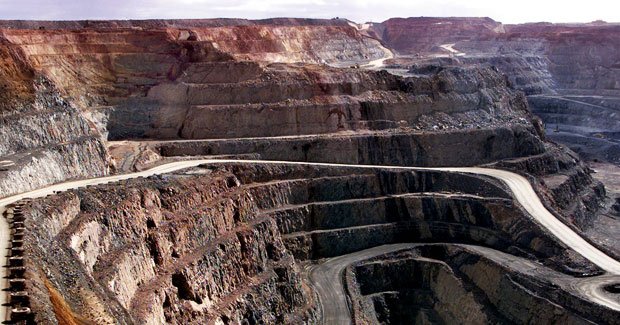WA quake may have been man-made

WALLS AND FLOORS SHOOK for up to twenty seconds, and residents of the Goldfields city of Kalgoorlie-Boulder feared their houses might topple when a large earthquake rocked the town early Tuesday.
Measuring magnitude 5.0 on the Richter scale, it is the strongest quake ever recorded in the region, 600 km east of Perth. The earthquake hit the Goldfields at 8.17am with the epicentre located ten km southwest of the Kalgoorlie city centre.
A receptionist had to be pulled from the rubble of a physiotherapy clinic and around eighty buildings were damaged, mostly in the historic streets of Boulder — where the balcony and roof parts of the heritage-listed Golden Eagle Hotel crashed to the ground. The Kalgoorlie Super Pit, one of the world’s largest open cut gold mines which borders Kalgoorlie’s main streets, was temporarily shut down.
Yearly occurrence
Geoscience Australia spokesman David Jepsen says the previous largest quake to hit the area was a magnitude 4.5 recorded in 1947. “On average, Australia has earthquakes this size or larger every year and they can occur anywhere in Australia.” He says the nation’s largest earthquake of 7.2 was also recorded in Western Australia. That occured in 1941 at Meeberrie, near the coastal town of Kalbarri.
David says this type of event, called an ‘intra-plate’ earthquake, typically occurs due to the build up of stress in the interior region of one of the Earth’s moving tectonic plates. The Australian continent is part of the Indian-Australian plate which is being pushed slowly north-east at approximately seven centimetres per year.
The quake area lies in the Yilgarn Craton, a mineral-rich province which attracts more than half of Australia’s mining exploration activity, and produces two thirds of all gold and most of the nickel mined in Australia.
Mining induced?
But others are questioning if the quake may have been caused by human activity. Kevin McCue, President of the Australian Earthquake Engineering Society and Director of the Australian Seismological Centre says the Goldfields region is listed as low-risk on Geoscience Australia’s earthquake hazard map, yet it has suffered frequent earthquakes since mining began in the 1890s. “All of these events have been attributed to stress relief associated with underground mining, so the question is whether this one is also a mine-induced event, although it is rather large.”
He says man-made earthquakes can be caused by old mine workings collapsing or excavation on the crust that increases the differential between vertical and horizontal stress.
Associate Professor Tom Blenkinsop, from the School of Earth and Environmental Science at James Cook University in Townsville, agrees that Kalgoorlie is not in a zone of active seismicity. Predicting these unusual earthquakes in continental interiors is even more difficult than those in areas where tectonic plates meet and overlap, he says. “But there have been other significant earthquakes in Western Australia in the past and there will be more in the future.”
IMAGE CAPTION: The Super Pit at Kalgoorlie, 595 km east of Perth (Photo: Getty Images)
LINKS
Land of earthquakes and volcanoes
The biggest storms in recorded history
How the Japanese tsunami travelled
Amazing tsunami videos

